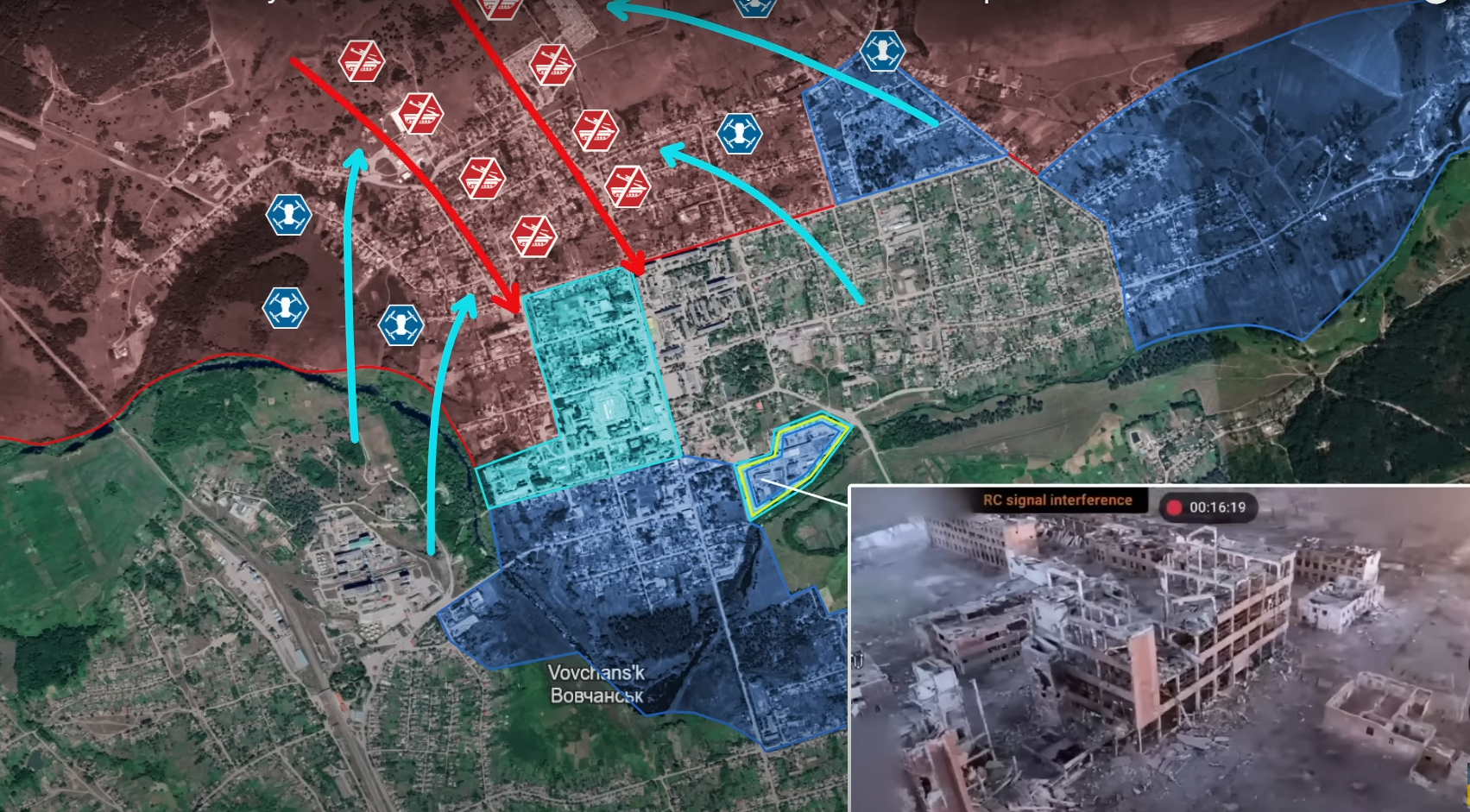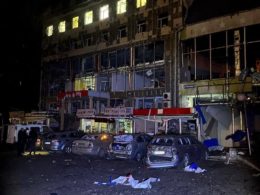Day 953
On 3 October, there are a lot of updates from the Kharkiv direction. Here, in a desperate bid to shift the momentum in Vovchansk, the Russian command deployed brutal Chechen Akhmat forces to pressure exhausted troops into launching a counterattack to reclaim the Aggregate Plant.

What followed exposed just how dire the Russians' situation had become, with consequences that would decisively shape the battle for Vovchansk.
Recent developments in Vovchansk have dramatically shifted the tactical landscape. The focal point of these operations was the Vovchansk aggregate plant, which Ukrainian forces successfully recaptured after an intense week-long assault.
This operation, which employed some of Ukraine's most elite units, marked a critical milestone in the battle for Vovchansk. The aggregate plant represented the last major fortified position within the city, and its fall revealed the desperate conditions under which Russian forces were operating.
Captured Russian soldiers have disclosed that they were forced to dig wells in the plant's basements to access drinking water – a testament to the severe supply issues they faced during the siege. Moreover, it has come to light that Russian commanders maintained terror control through a regime of deception and intimidation, compelling their forces to hold these untenable positions at great cost.
In the wake of this setback, the remnants of the broken Russian forces started to retreat towards the northern parts of the city, transitioning to a defensive posture. To cover this retreat, they had intensified artillery attacks and bombardments targeting Ukrainian logistical elements within the city.
Ukrainian Kharkiv Group of Forces Spokesperson Vitaliy Sarantsev reported that Russian forces are now digging tunnels and underground passageways between buildings in Vovchansk to conceal troop movements. This tactic shift indicates a clear attempt to delay Ukrainian advances and facilitate a defensive realignment.

Further complicating the situation, Russian sources claim to have disabled the bridge over the Vovcha River on Soborna Street continuation. While this claim is yet to be independently verified, such an action would align with their apparent strategy of hindering Ukrainian progress and buying time for their defensive preparations.
In a significant development, reports indicate that the Russian command has redeployed Chechen Akhmat elements to the Kharkiv direction to serve as blocking units. These “blocking units” are reportedly tasked with compelling Russian troops to advance, enforcing punishments, and even executing Russian soldiers who refuse to fight.
As you may recall, elements of the Akhmat forces were already pulled out from the Kharkiv direction in August to deploy them as an emergency solution after the start of the Ukrainian incursion into Kursk.
This drastic measure again suggests a severe morale crisis and combat effectiveness among regular Russian units. After the redeployment of Chechens was complete, the Russian soldiers were forced to attack the aggregate plant and restore the recently lost positions. The operation involved numerous MT-LB vehicles from the 82nd Motorized Rifle Brigade, fully loaded with infantry on top. This attempt proved to be disastrous.

Ukrainian forces, particularly their drone operators, effectively repelled the attack. The 57th Separate Motorized Infantry Brigade reported inflicting heavy losses on the Russian forces, claiming the elimination of approximately 100 Russian personnel, wounding about 25 more, and destroying 17 MT-LB and BMP-2 armored vehicles.
Geolocated footage from this failed counterattack reveals the brutal efficiency of Ukrainian drone warfare. Russian soldiers were caught off-guard, often unable to dismount from their vehicles before being engaged by FPV drones. In other instances where infantry did manage to disembark, they found themselves relentlessly pursued by grenade-dropping drones, with little effective cover due to the extensive destruction of building roofs in the area.
The absolute disregard for the lives of their soldiers continues to drive Russian commanders to order what can only be described as "meat wave" assaults. Ukrainian forces have capitalized on these tactics, weakening Russian units operating in the region.

As the situation in Vovchansk continues to evolve, it appears increasingly favorable for Ukrainian forces. The capture of the aggregate plant, the last remaining fortress in Vovchansk, has significantly improved the Ukrainian position in the area.
In the coming days, further Ukrainian advances may be seen as they exploit their recent gains while Russian forces grapple with the challenges of maintaining cohesion and mounting an effective defense with their increasingly exhausted forces.
In our daily frontline report
, we pair up with the military blogger Reporting from Ukraine to keep you informed about what is happening on the battlefield in the Russo-Ukrainian war.
Read also:





